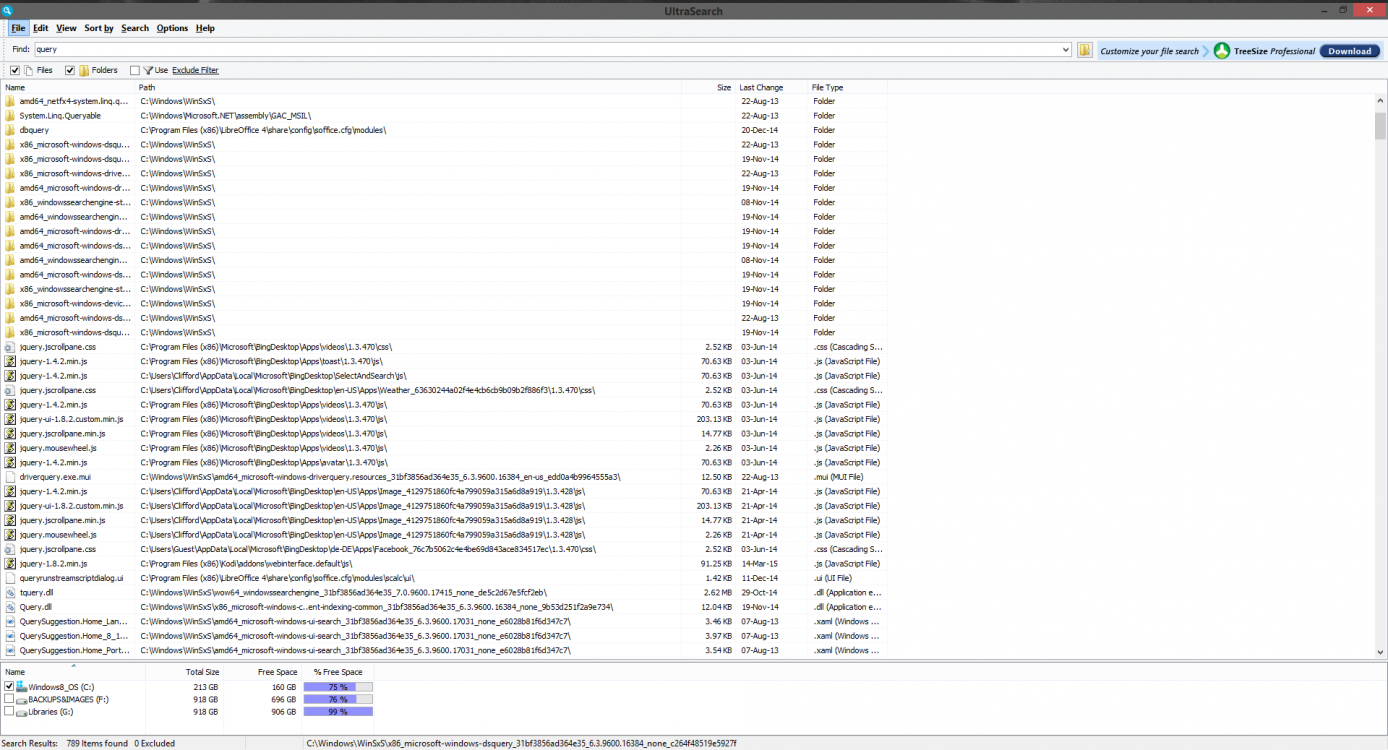

- ULTRASEARCH BROWSE FILES AFTER A CERTAIN DATE ZIP
- ULTRASEARCH BROWSE FILES AFTER A CERTAIN DATE WINDOWS
UltraSearch can search plain text files very quickly for a specific search term by traversing and analyzing them at file system level. Information on full-text search: Pure text files and IFilter More information and examples can be found in the following chapter Search syntax. If you want to combine several search terms, write AND or OR between both search terms, for example: readme OR manual. If you want to limit the search to a certain file sizes, you can specify a minimum and / or maximum size, for example: size: 5MB If you want to search for file content, precede the search term cont: or content: before the search term, for example: cont: license. If you want to search for a file group, precede the search term group: before the search term, for example: group: Video Files. If you want to search for a file extension, precede the search term ext: or extension:, for example: ext: txt. the file name in the search field, optionally with the word name: in front of it. Note: This option is only available for the 'Move' operation.To start a search, simply enter the desired search pattern, e.g.
ULTRASEARCH BROWSE FILES AFTER A CERTAIN DATE WINDOWS
If this is also not possible, a Windows shortcut is created. If it is not possible to create a hard link, a symbolic link is created.

If 'Link' is selected and the files are on the same partition, hard links are created. If this option is enabled, a shortcut or link is created in the original location pointing to the new location to which the file was moved. Leave shortcutlLink at the original location pointing to new location When this option is enabled, the timestamps of the original files are applied to each of the moved files in the target. Preserve timestamps of the original items Note: This option is only available for the 'Move' and 'Copy' operations. X = 2 > 'D:\old files\Mayer\My Document.doc' X = 1 > 'D:\old files\user\Mayer\My document.doc' X = 0 > 'D:\Old Files\C\User\Mayer\My Document.doc' The first x levels of the directory structure are not reconstructed at the destination location.įor example, if you move the file 'C:\User\Mayer\My Document.doc' to the target folder 'D:\Old Files\', you will get the following results depending on the value you choose for x: This option allows you to specify at what level the directory structure of the files should be retained. Preserve directory structure, starting from level Not supported when burning to optical media. Note: This option is only available for 'Move' and 'Copy' operations. When this option is enabled, the access permissions of the original files are applied to each of the moved files in the target.

Preserve permissions of the original items Note: This option is only available for the 'Zip' operation.
ULTRASEARCH BROWSE FILES AFTER A CERTAIN DATE ZIP
Not supported when burning to optical media.Īutomatically removes all folders that no longer contain files or other folders due to this move operation.Įnable this option to ensure that the original files are not deleted after copying them to a Zip file. Note: This option is only available for the 'Zip', 'Move' and 'Copy' operations. You can keep the existing file, replace it with the new file, or rename the existing file. a file with the same name already exists at the destination. Here you can decide what should happen if name collisions occur during a file operation, i.e. Skip/Rename/Replace/Replace only older existing files Note: This option is only available for the 'delete' operation. Here you can specify whether the selected items should be moved to the Recycle Bin or deleted directly from the hard disk. The Windows Scripting FileSystemObject provides powerful and easy-to-use file system and path operations. The executable files can also be batch files, a PowerShell script, a VBScript or similar. Moves selected files to the specified ZIP archive.Ĭalls a freely selectable executable file for each marked file and passes the absolute path of the file as first parameter to the command line. If this is not done, the moved files inherit their security attributes (as usual) from their parent elements. If desired, the security attributes are also copied. If this is not done, the moved files inherit their security attributes (as usual) from their parent elements.Ĭopies selected files to the specified path. If desired, the security attributes can also be copied.

Optionally, a shortcut or link can be created at the original location, each pointing to the new position of the moved object. Moves selected files to the specified path. Information: Deleting without setting the function described above cannot be undone easily. Otherwise they will be deleted from the hard disk. If the option 'Move to the Recycle Bin' is activated, the files are moved to the Recycle Bin. Deletes all selected files after a security prompt.


 0 kommentar(er)
0 kommentar(er)
